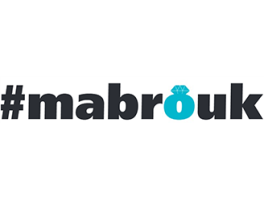Ellen Kamaras
“For, behold, the winter is past, the rain is over and gone; the flowers appear on the earth; the time of the singing has come…”
Shir Hashirim 2:11-12.
Are you looking forward to spring? I can almost smell the grass being mowed.
Spring is a time for change, rebirth, and renewal.
No more snow boots, frigid temperatures, and layering clothes.
Spring means getting outdoors and seeing things bloom, including our spirits and happiness levels. Spring liberates us physically from winter’s dark days and brings emotional emancipation and joy when we see plants and flowers beginning to grow.
To combat pandemic fatigue, spring affords opportunities to meet with family and friends outdoors, where the airflow is better and there is ample space to practice social distancing.
Wellness professionals view spring as an opportune time to check in with yourself and clarify your life purpose, values, and goals.
Which aspects of your life need tweaking? Or might benefit from a jumpstart from spring’s energizing bursts of growth?
Is it your diet or fitness habits? Your career? Or your approach to tackling your daily workload or tasks?
Even in non-pandemic times, we tend to hibernate in the cold days of winter.
Tap into the Joy of Spring
Let’s shake off those winter cobwebs. Let’s bring more joy to our daily routines, health, career, and personal and work relationships.
As Jews, spring brings Pesach, a holiday that allows us to re-visit and honor our physical and spiritual freedom.
We were slaves in Mitzrayim. Mitzrayim is derived from m’tzarim, meaning “narrow straits.” Hashem removed us from Mitrzrayim, a place of constricted opportunities. We each have various physical, financial, emotional, or health constraints.
Celebrating Pesach and reading the Haggadah can inspire us to pause and carve out time to examine our lives and our challenges and to determine what changes are needed.
I recently heard an interesting analogy about personal transformation and weeding out one’s negative habits. A weed is a wild plant that grows where it is not wanted. Assume our goal is to plant and grow tomatoes. We strive to eliminate the weeds’ roots on our lawn so that they will not dislodge our tomato plants. This process can be time-consuming and costly. Similarly, we all have bad habits and unhealthy attitudes that are our personal weeds. If we want to uproot our personal weeds, replace negative habits with positive ones, and develop healthy relationships, we need to invest time and effort.
We all know how to “force quit” and “restart” our computers when they freeze or are not functioning well. Restarting our lives does not come as easily.
It is challenging to break out of old patterns even if they are no longer serving us or we are not functioning optimally.
Ideas to Help You Reboot
Below are ideas to keep in your mental toolbox that may also help you jumpstart your spring reboot.
Personal or professional transformation is often about creating new habits to replace existing negative ones and stepping out of your comfort zone.
You do not have to be in your twenties or thirties to hit the reset button. Twice I reinvented myself professionally, once at 50 and again at 58. We learn more from our past challenges than from our successes. Stretch yourself and try something new. Even if it is a bit scary, it can be empowering.
Start small. You do not need to jump out of a plane to get outside of your comfort levels.
Remember the SMART acronym when setting goals. Make sure they are Specific, Measurable, Achievable, Realistic, and Time-Sensitive.
One word of caution: Beware of adopting a change or goal because you “should” – try replacing “I should” with “I could” and DREAM BIG!
Health
Did you put on a few pounds (the pandemic fifteen) or do you feel stiff from working from home and sitting at your desk for hours on end?
One winning tool to shed some pounds and get moving is to use your commute time for exercise. Why not try a Zumba or Pilates class during the 30 minutes or the hour that you would have taken to travel to your job in the morning? Studies show that exercising in the morning is best. You start your day with endorphins in your bloodstream, and you do not have to work out later, a huge feat. Putting exercise off provides openings for other priorities to replace your workout. Research shows that one’s will power is stronger earlier in the day and you are more prone to make healthier meal selections if you exercise in the morning and build on the healthy choice you made when you began your day.
From a science perspective, when you exercise in the morning you may be less attracted to pictures of tempting food, you are more likely to amp up your physical activity during the remainder of the day, and you will have an increased metabolism and will burn more calories as you consume them. Exercising in the evening may hinder your ability to sleep.
When we work from home, food is accessible 24/7. Therefore, it is even more essential to plan healthy snacks and meals and to schedule in time to take a break and move or get some fresh air.
Choose a goal that is achievable and fits with your work and other responsibilities. If you like to walk, plan for the duration and determine your route. Try to work in a reward (like a low-fat cappuccino) at the end of the walk.
Jobs and Career
49,000 jobs were added to the job market in January and the unemployment rate decreased from 6.7% To 6.3%.
Research which companies and sectors are still hiring and be diligent about submitting job applications.
Hiring executives advise that it is vital not to overlook the #1 factor to help getting a job during the pandemic, networking. Dedicate time on a daily basis to networking. People are traveling less and staying put, which makes connecting by phone or email easier. A 2016 U.S. Bureau of Labor Statistics and Yale University report concluded that 70 percent of all jobs are found through networking. Do your research on the best ways to network. Are you on LinkedIn? LinkedIn is the best way to make connections in your industry.
Consider taking online classes to keep building critical skills for your future.
Relationships
Could you use some new friends? We all need friends to lean on when bad and sad things happen, friends that we feel safe and secure with. Seek out like-minded people with shared interests and values, ones that can help you grow, meet your goals, and improve your life. Do your friends listen? Are they empathetic?
To find new friends, you have to actively search for individuals who will support you and share in your defeats and successes. Let go of toxic relationships that drain you emotionally, where you are being controlled, or where your boundaries are not respected.

Making new friends during the pandemic has been challenging but is not impossible.
Have you tried reaching out to people you have lost touch with or joined a virtual book club or a Zoom shiur? There are many free or inexpensive Zoom webinars that encourage interactions with like-minded people. These include alumni associations, synagogues, Jewish Community Centers, and more.
Ask for What You Need
In any relationship, whether a marriage or a friendship, it is important to be clear about one’s needs. It is reasonable to have expectations of our, friends, spouse, and other family members. What is unreasonable is to expect them to read our minds or to expect them to always be there for us when we need them.
The pandemic and the New Normal have heightened our feelings of anxiety, uncertainty, and lack of control. A helpful tool to remember is that the only thing we can control is how we respond to what goes wrong, namely, our actions/reactions, attitudes, and decisions. We cannot control what others do or decide. I heard a beautiful shiur that recommended controlling what you can, your attitude and personal traits. Work on enhancing your middot and values. Thank Hashem for what you have now and more berachot will follow.
Family and Parenting
Moms and dads, please continue to stay positive and practice self-care as you balance work from home with childcare and parenting responsibilities.
With spring’s arrival, spend more time with your family outdoors and unplug. Did you know that spending time in the green outdoors increases your creativity and brain function? Get yourself and your children away from the phones and computer screens. On sunny days our brain produces more serotonin, a mood-lifting chemical. Sunlight is also a natural source of vitamin D, which helps you fight various diseases, including COVID-19.
I would like to conclude with some advice from a dear friend, Chaya Benchemhoun. It’s ADAR! Choose to be happy. It’s our tradition in Adar to focus on thoughts and actions that bring us joy!
Ellen Geller Kamaras, CPA/MBA, is an International Coach Federation (ICF) Associate Certified Coach. Her coaching specialties include life, career, and dating coaching. Ellen works part-time as an entitlement specialist at Ohel Children’s Home and Family Services. She can be contacted at ellen@lifecoachellen.com (www.lifecoachellen.com)















